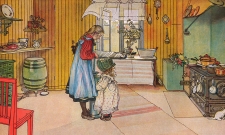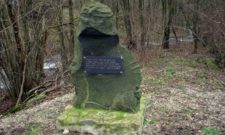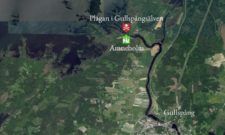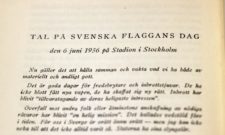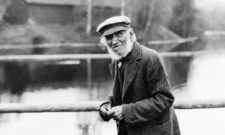Shop our historical maps
History
We built the sewer line in Falköping

Sep
WE BUILT THE COUNTRY: The old photo shows the closure of a sewer line in Falköping, Västergötland, which 25-30 men were working on between 1921 and 1922. They represent a small but memorable group of all the countless people who built modern Sweden.
"The sewer in question ran partly towards Hulesjön and partly towards Torbjörntorp. It was decided that a sewer line should be built. The work was carried out as emergency relief work in 1921 - 1922. The workforce amounted to between 25 and 30 men. Most of them came from other places. Many unemployed stonemasons from Bohuslän participated, as well as foundry workers from Köpings Mekaniska Verkstad. The only "mechanical" equipment available was a stump breaker and a crane. The trench was dug 5 metres deep. Stone carts and two horses were used to help pull it. The pipeline ran from the underpass at the carpentry factory - under the railway - to Mössebergsgatan - Nils Ericsonsgatan towards the northern underpass." - Source: https://digitaltmuseum.se/021016041899/At the end of the First World War in 1918, unemployment in the country was 4.6% , but by 1922 it had risen to 34.3%. Therefore, the state considered it necessary to put in emergency relief work.
"It is estimated that nearly 35,000 men were employed this year in road construction, wetland ditching and forestry work. Wages were about 75 % of the normal for rough work. People lived in barracks, often far from home, and anyone who refused to take emergency work was left without any compensation." - Wikipedia, Emergency relief work
About Falköping
The name Falköping means the market town on the Falan, where fala is an old word for outlying land that is not suitable for cultivation, but better for grazing. The land of Falbygden has been farmed by West Guelph farmers since the Neolithic period, for over 5,000 years. Remaining from ancient times are a large number of footpaths as a feature of the townscape. The oldest written sources where Falköping is mentioned are Rimbegla (12th century) and a charter to the West Götal Law (1281). In Rimbegla it is said that Falköping held a Friday meeting once a year. Normally, meetings were held on days other than Fridays. The reason for holding the meeting on a Friday is believed to be a pagan relic. The goddess Frigg was particularly revered in the Falköping area and in Friggeråker north of the town centre there used to be, judging by the meaning of the place name, an old pagan place of worship dedicated to the goddess Frigg.Subscribe to YouTube:
If you appreciate Allmogens independent work to portray our fine Swedish history and Nordic culture, you are welcome to buy something nice in the shop or support us with a voluntary donation. Thank you in advance!
Support Allmogens via Swish: 123 258 97 29
Support Allmogens by becoming a member
Support Allmogens in your will

